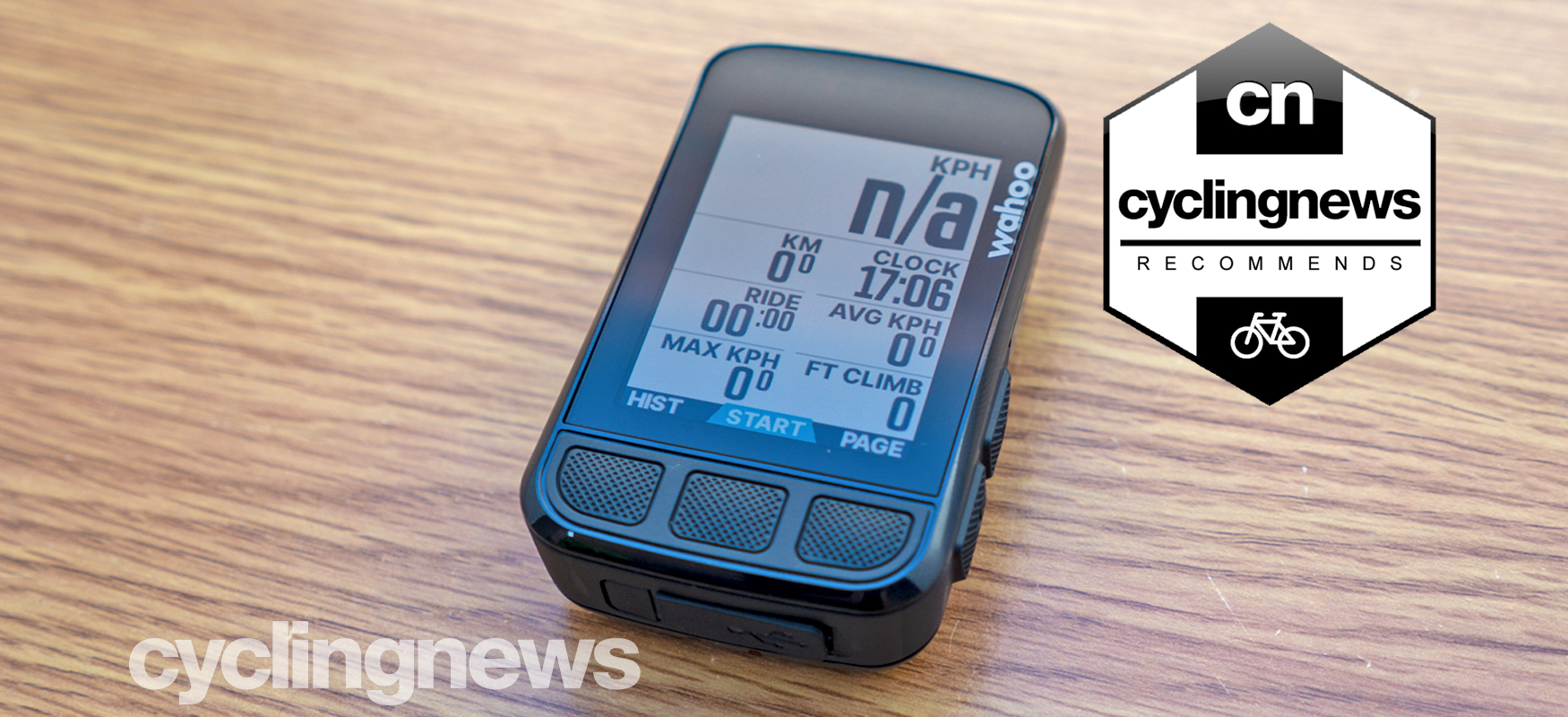Cyclingnews Verdict
The best GPS computer Wahoo has made to date, and among the best currently on the market, but it still comes with its quirks
Pros
- +
Map imagery is much more concise than Roam
- +
Reworked buttons offer great tactility
- +
Wahoo's same great app compatibility and connectivity
- +
On-device workout offers multiple useful views
- +
Near-infinitely customisable page layout and structure
- +
Simplicity of loading route or workout
- +
Simplicity of uploading rides to third party sites like Strava
Cons
- -
Small screen size means it's still difficult to navigate by eye without a preloaded route
- -
On-device navigation has no search function, making it difficult and time-consuming to locate your destination
- -
Cannot scroll backwards through pages
- -
Buttons still vague when wearing gloves
You can trust Cyclingnews
The short history of Wahoo cycling computers can be likened to an ever-swinging pendulum, in which Wahoo switches its focus between launching a feature-rich device, then trying to cram those features into a smaller package and back again.
When the first Wahoo Elemnt Bolt arrived on the scene in 2017, it was that exact story. Wahoo took everything good about the original Elemnt - launched in 2015 - and squeezed it into a device that weighed 40 per cent less and boasted an aero leading edge. Then in 2019, the pendulum swung back the other way and the Elemnt Roam was launched as the brand's new all-singing model with colour screen, on-device mapping and more.
2021 saw the launch of the new Elemnt Bolt, and with it, Wahoo's tact changed, but only ever so slightly. Designers have definitely taken everything great about the Roam and crammed it into a smaller Bolt-sized package, but this time they didn't stop there. They also looked at everything that wasn't quite so good and, well, fixed it. Or at least that was the claim from Wahoo, once you read between the lines a little.
What is it?
Wahoo's aero-shaped, small-form-factor GPS cycling computer that boasts a rich feature list, Bluetooth and ANT+ connectivity and more.
Who is it for?
It's marketed towards cyclists of all type, age and ability, both on-road and off, who want to track detailed ride metrics and get directions on the go. Its price aims it at the cycling enthusiast rather than the pure commuter or leisure cyclist, and it boasts a range of features that cater to the most data-driven athletes and racers.
Weight
69g / 2.43oz
Price
£249.99 / $279.99 / €279.99 / AU$419.95
What that meant is that the new Elemnt Bolt got the colour screen and on-device navigation from the Roam, but it got a better screen with more colours, a more detailed base map. It also got a USB-C charging port, convex buttons and an increase in onboard memory. All of which combine, on paper at least, to make a computer that should easily be a contender for our guide to the best cycling computers.
I have already deemed the Bolt victorious in the Bolt vs Roam head to head tests that I ran earlier this year, and I've been using the Elemnt Bolt V2 (although it's not actually called the V2, since the old version is no longer produced) as my main cycling computer ever since, to formulate an in-depth review and work out whether Wahoo's changes have actually yielded an improvement to the second iteration of the Wahoo Elemnt Bolt.
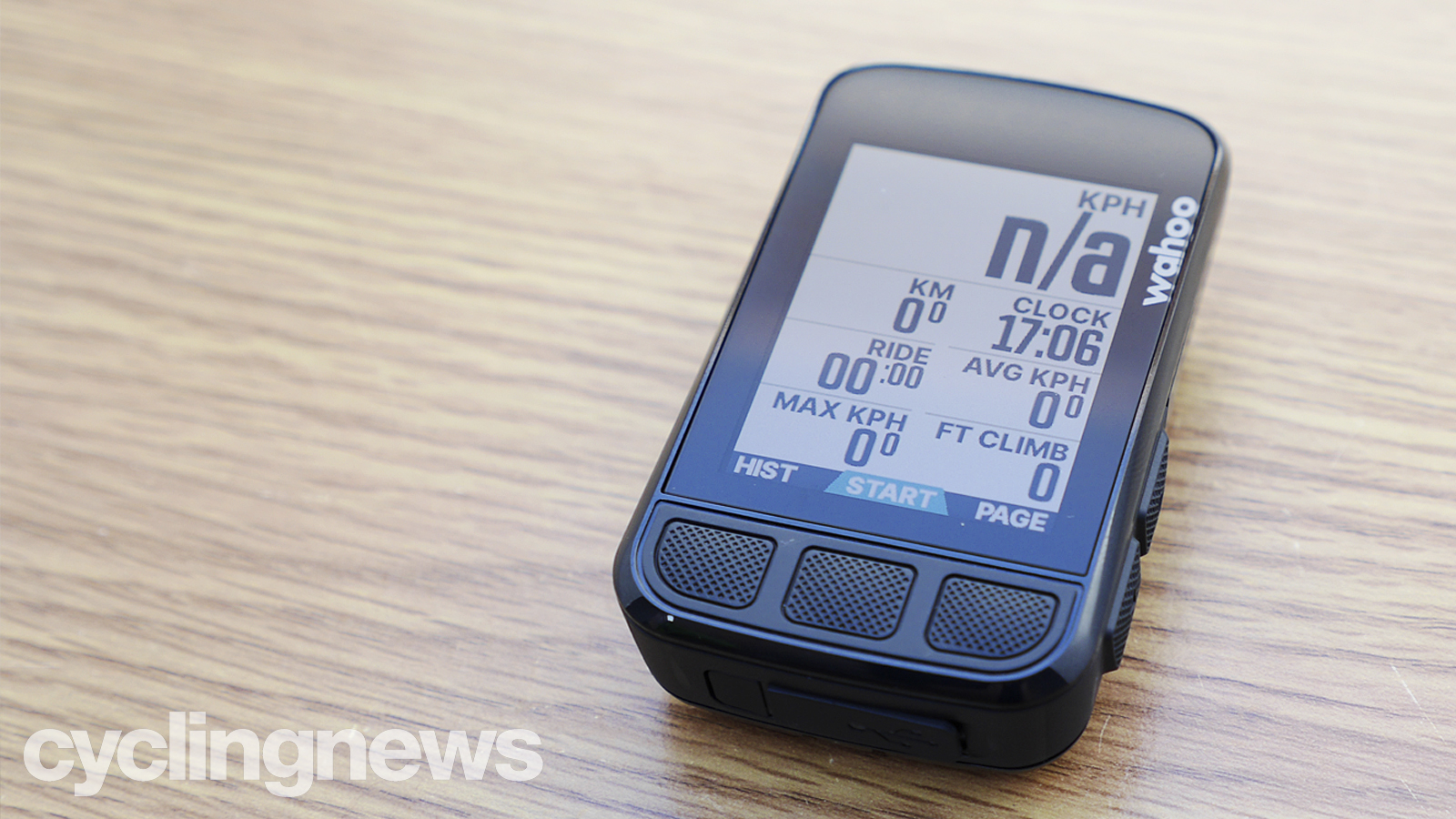
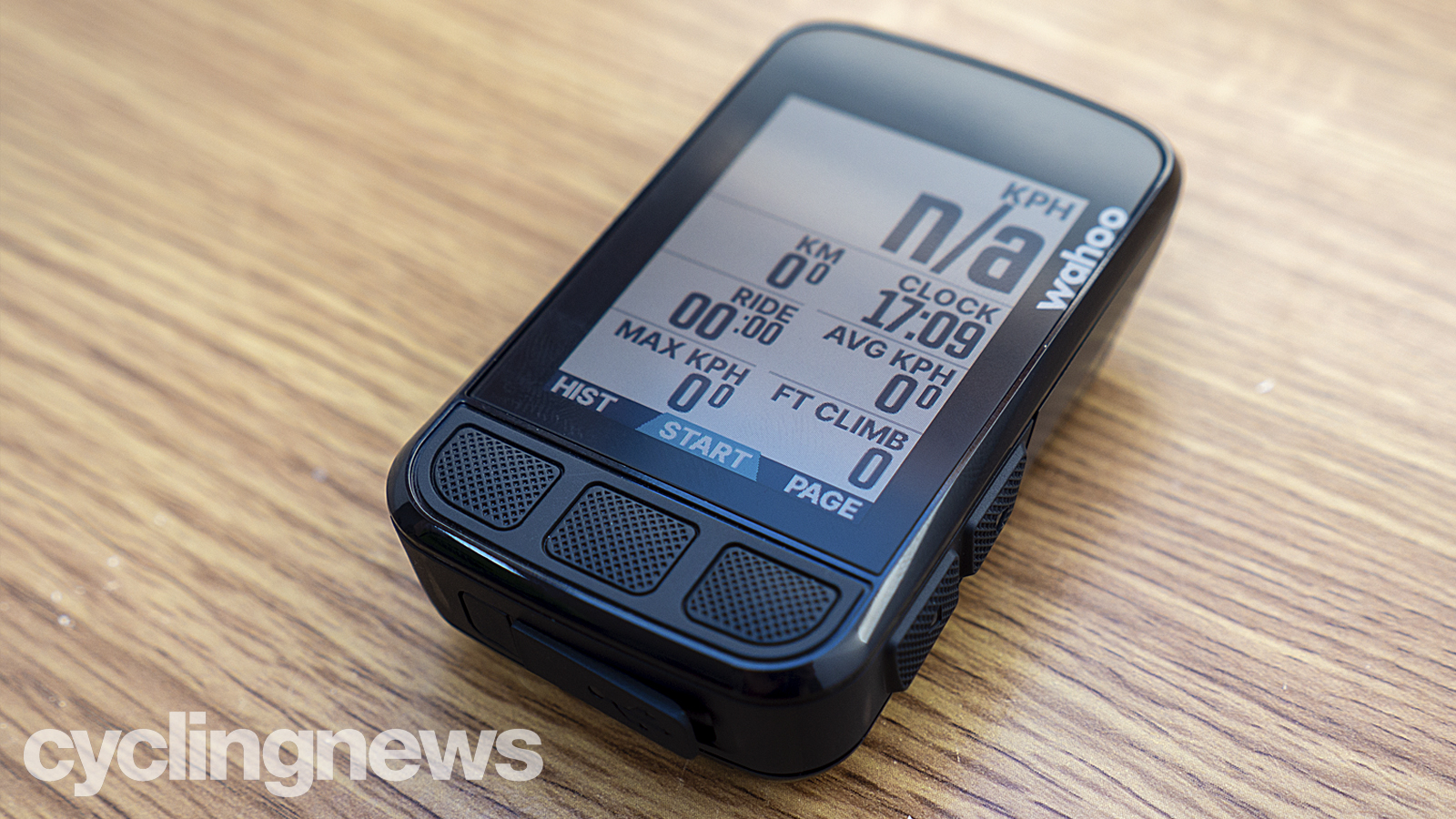
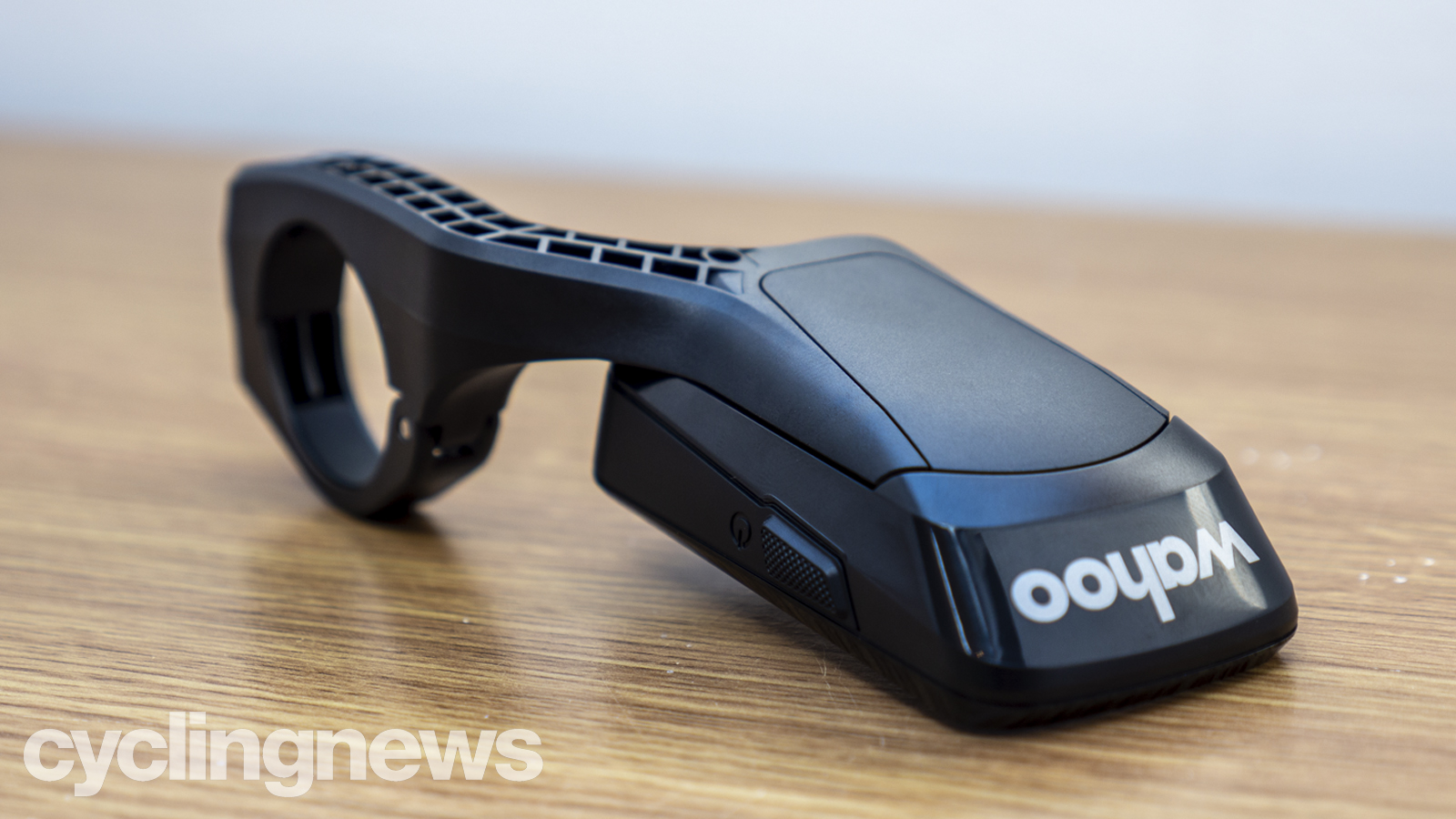
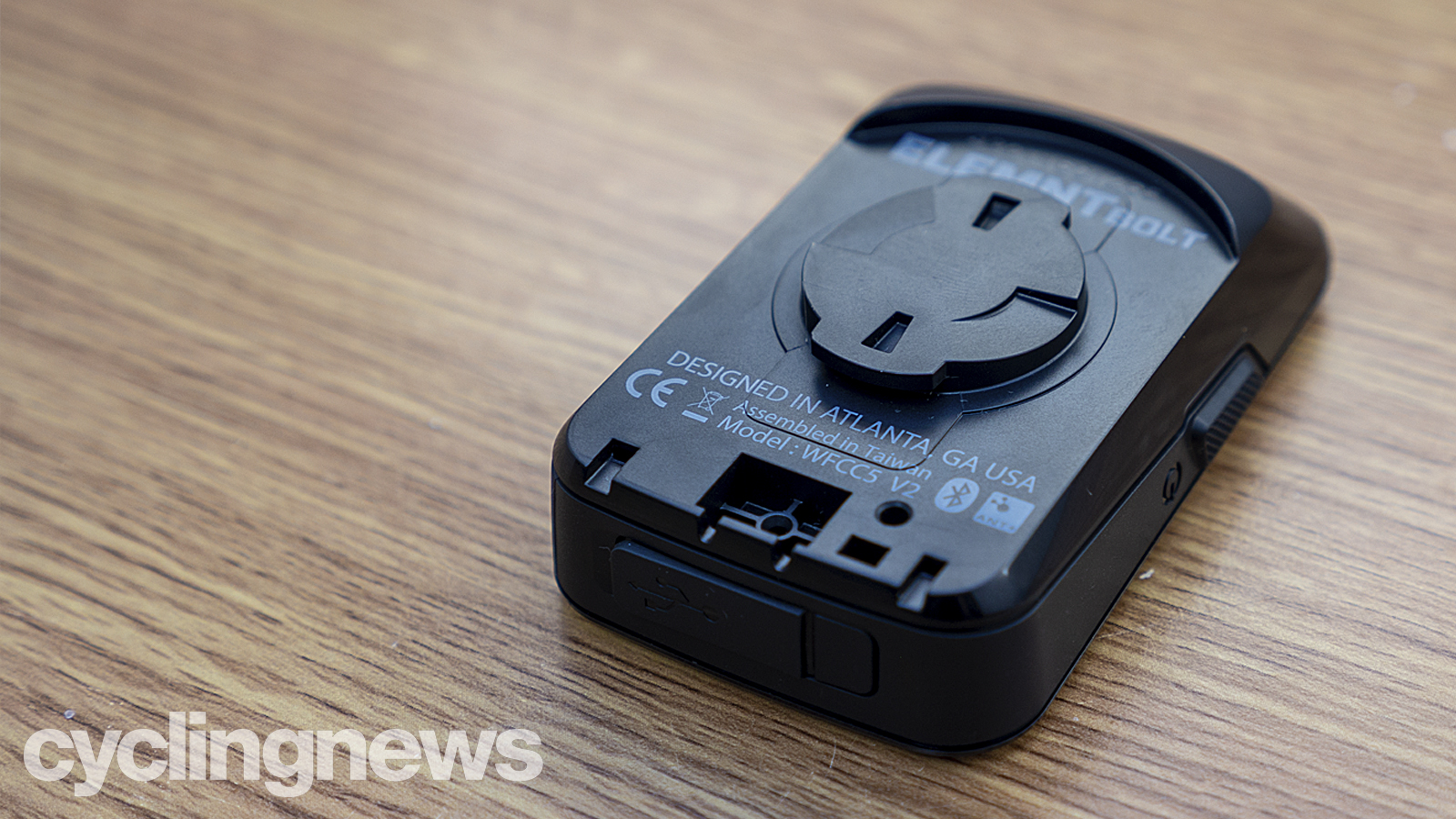
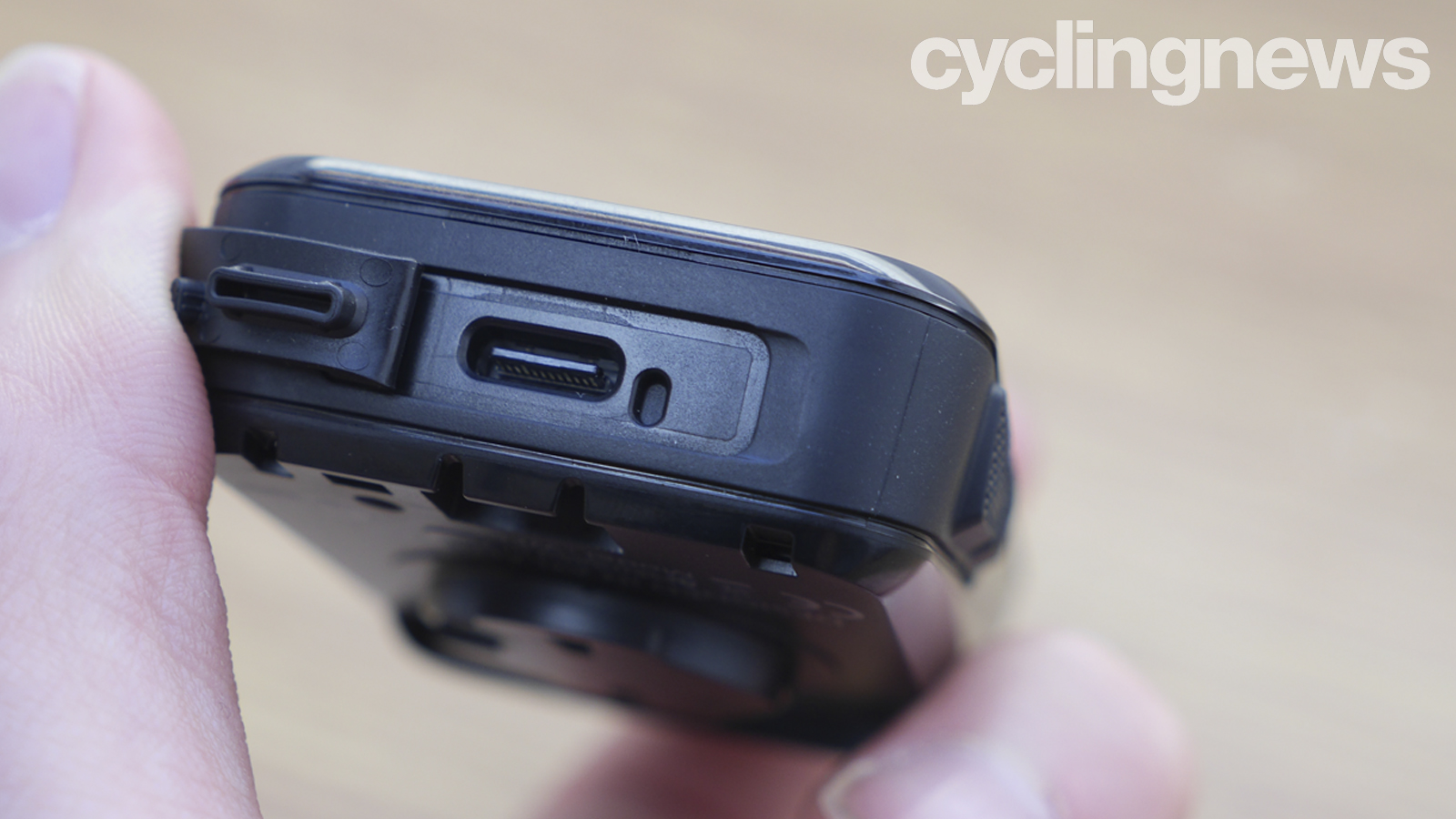
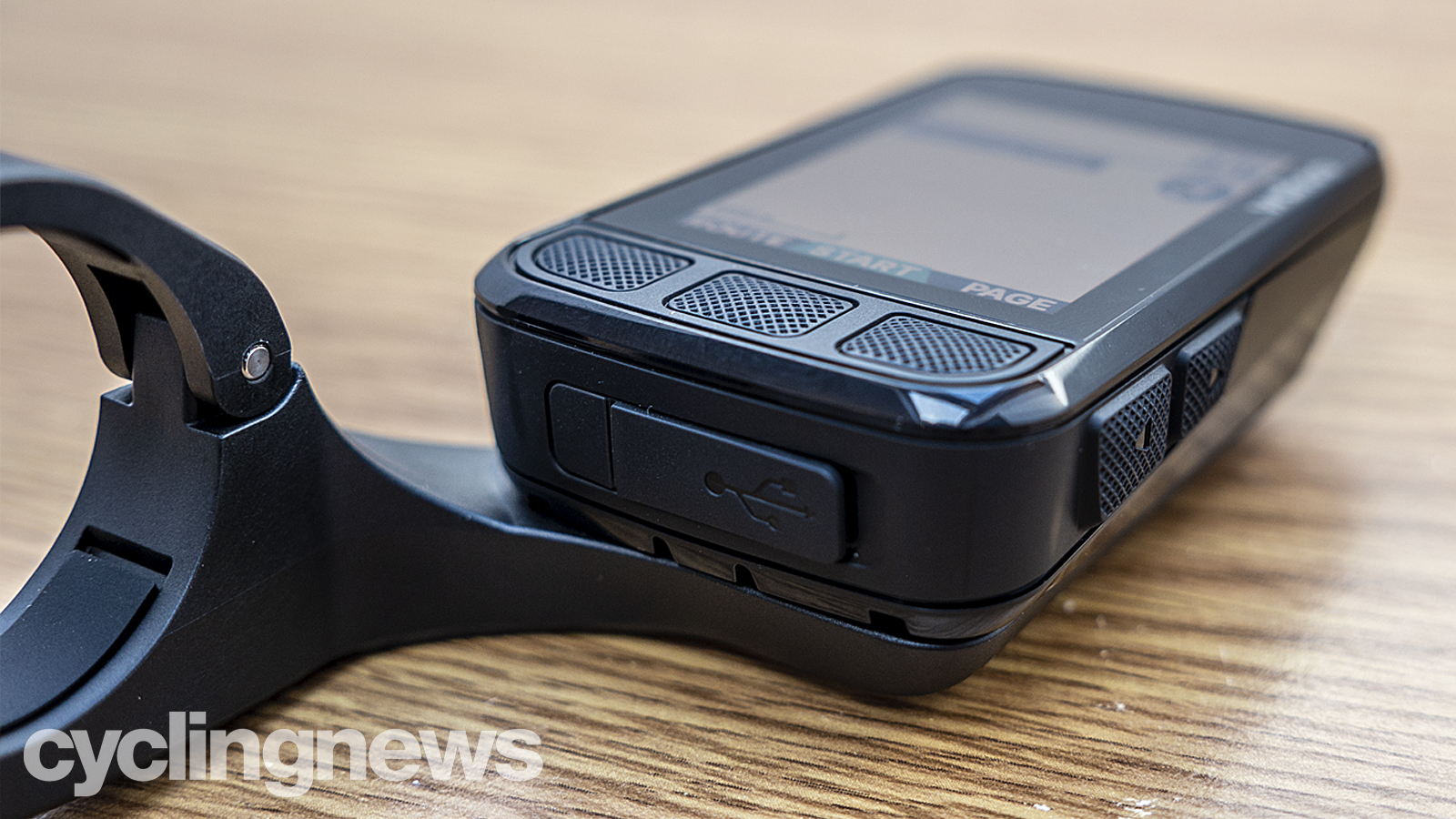
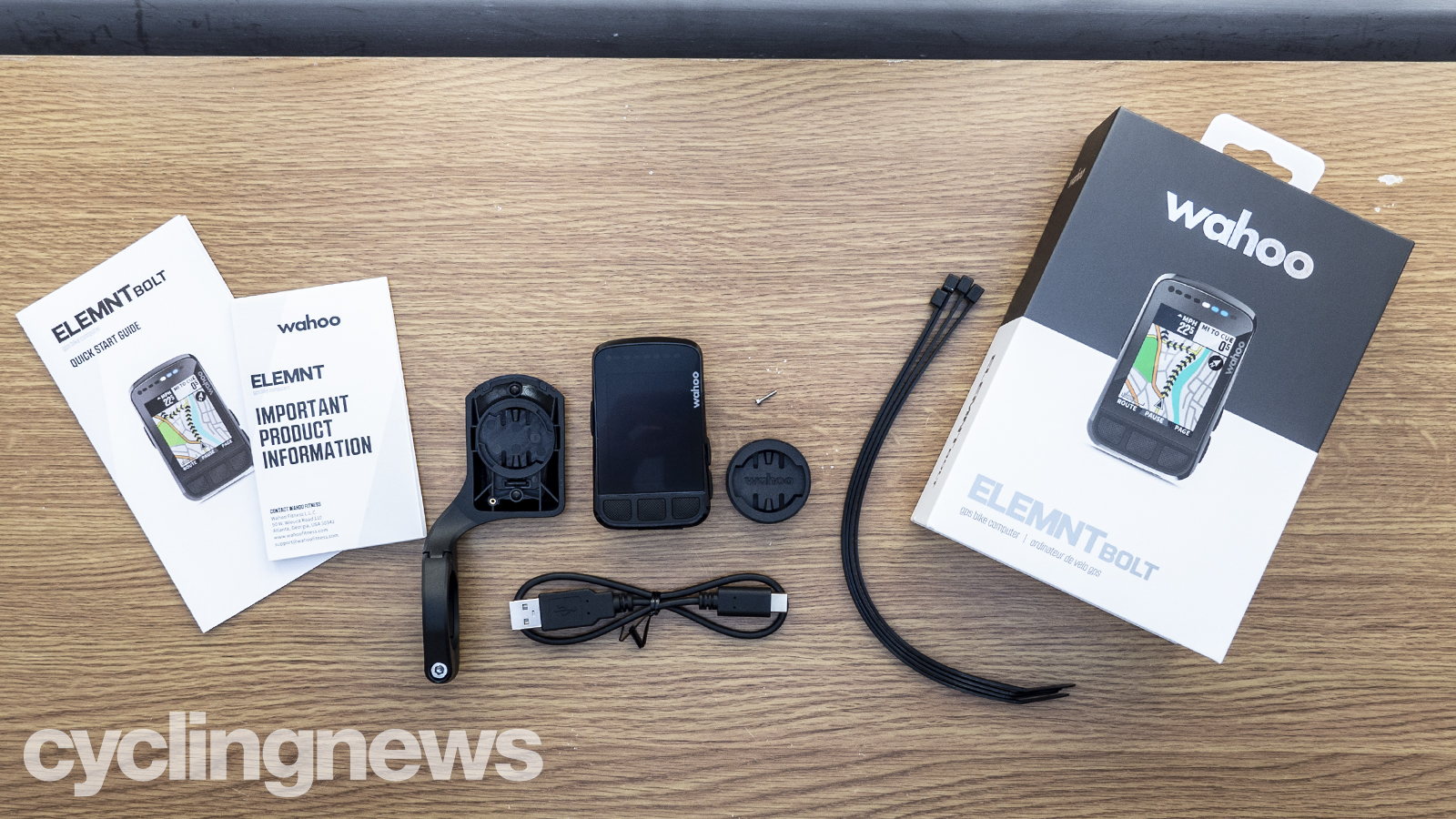
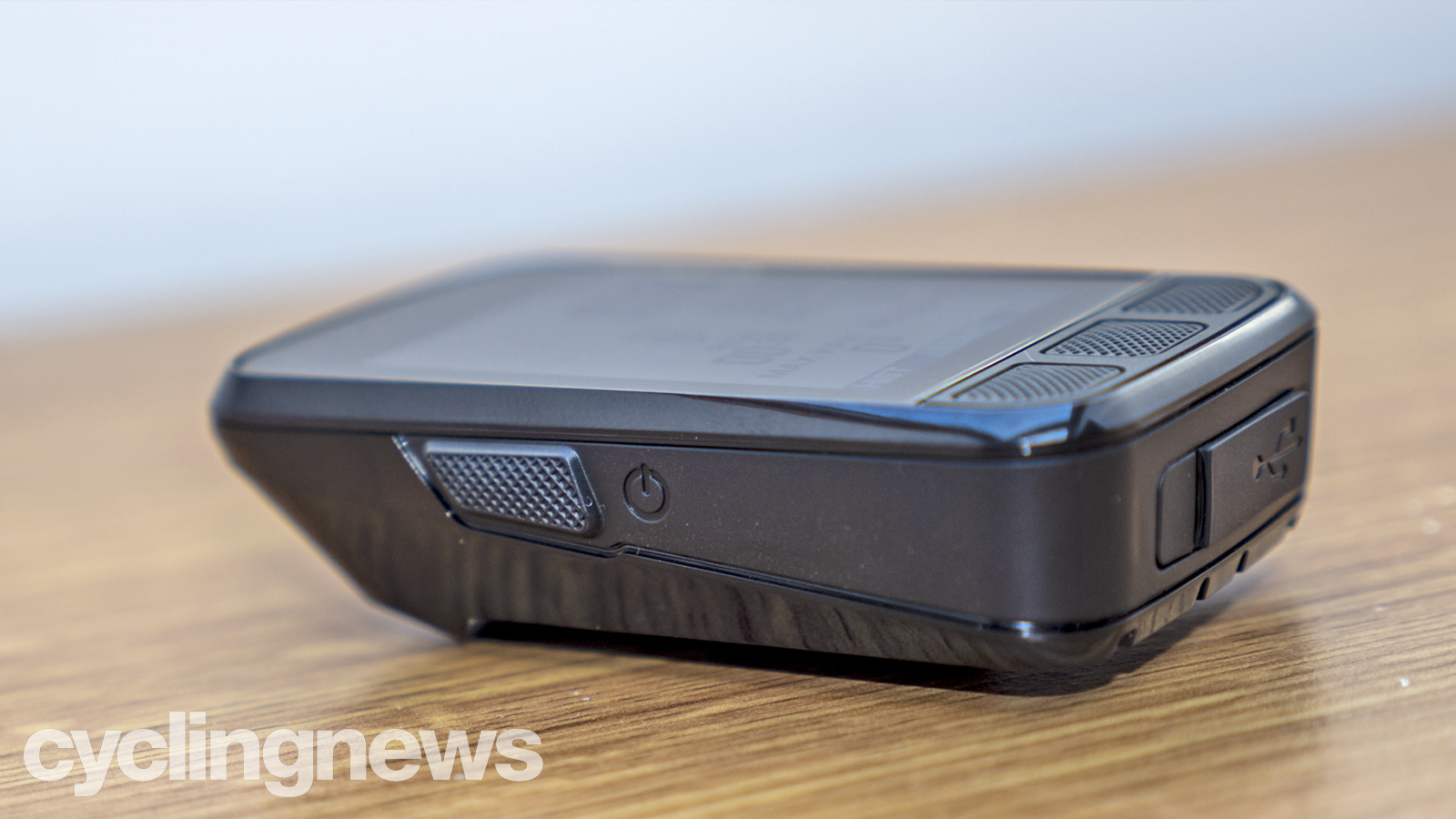
Design and specifications
With version two of the Bolt, Wahoo has retained the aerodynamic leading edge, which it is still keen on pointing out as a unique selling point. No data is available as to how much faster it actually is - if even at all - but nonetheless, it creates a strong aesthetic appeal that's hard to dislike. Unfortunately, Wahoo has changed the shape of the computer slightly and created a new aero mount to go with it. Anyone wanting to recycle their old aero out front Bolt mount will be able to; the new Bolt will fit, but they will have to accept a small gap.
Like the former Elemnt Bolt, it features a strip of LED lights above the display, which light up in relation to a chosen metric such as your heart rate or power vs the target when performing a workout or for navigational prompts. Next to this strip is an ambient light sensor which brings with it the ability to automatically adjust the brightness of the display.
The main update for the new Wahoo Bolt, however, was the switch to a colour screen. Taking what it learned with the Roam, Wahoo upped the number of colours from eight (on the Roam, the former Bolt was black and white) to 64. In use, that basically means Wahoo is able to more easily use colour as a way to differentiate things and add clarity and depth to the experience. The area where it adds the most value is the map, as the slight variances in colour help differentiate different aspects and road types such as main roads, secondary roads, rivers and bike paths on a map that already comprises more detail thanks to a higher quality screen. Compared to the Roam, it's considerably clearer but bear in mind that the benefit of clarity is offset a little by the smaller screen.
The screen itself is 2.2 inches diagonally, with a pixel density of 240 x 300px, which is one of the smallest around. Its most closely priced rival, the Garmin Edge 530, has a 2.6in screen.
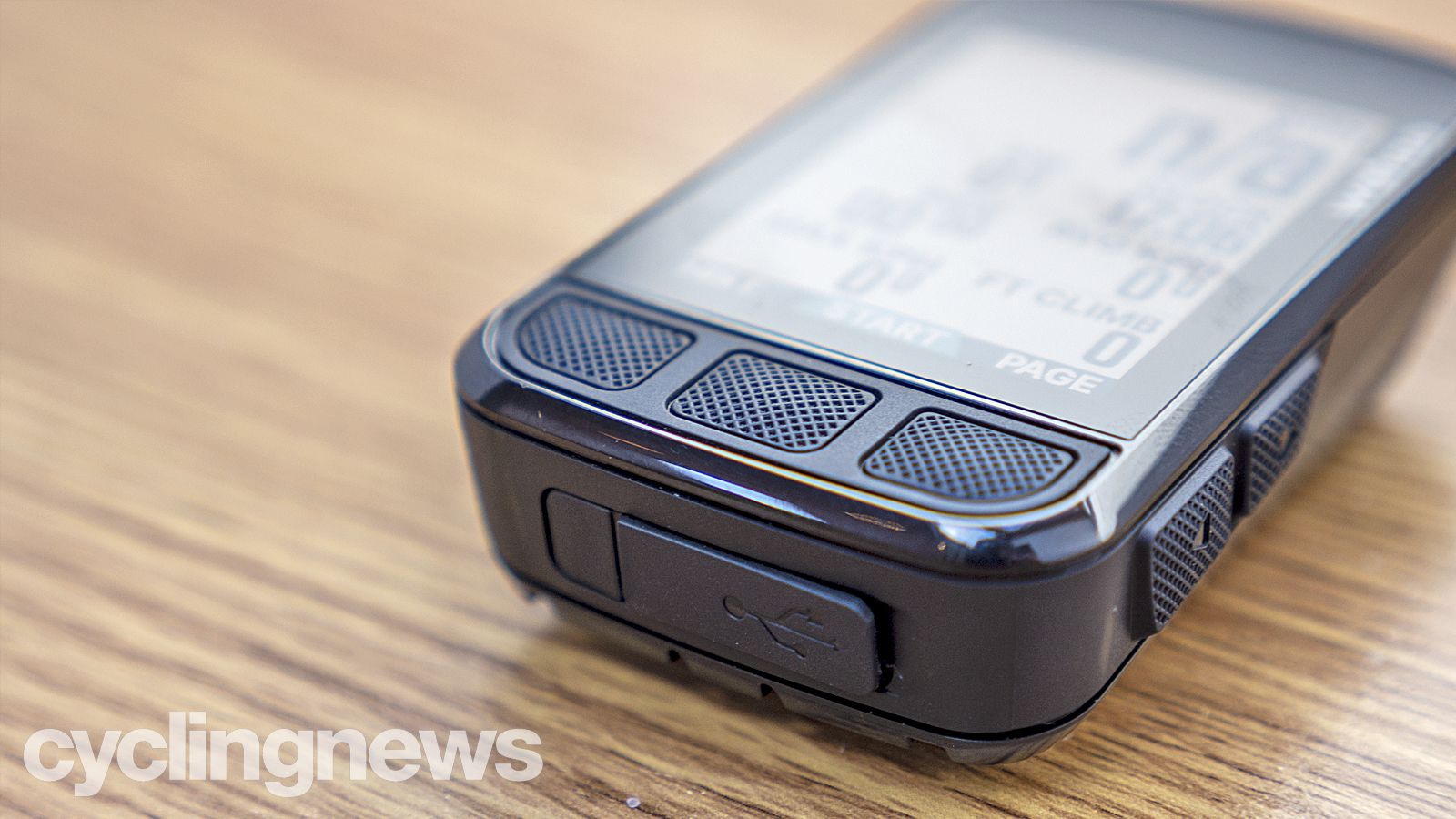
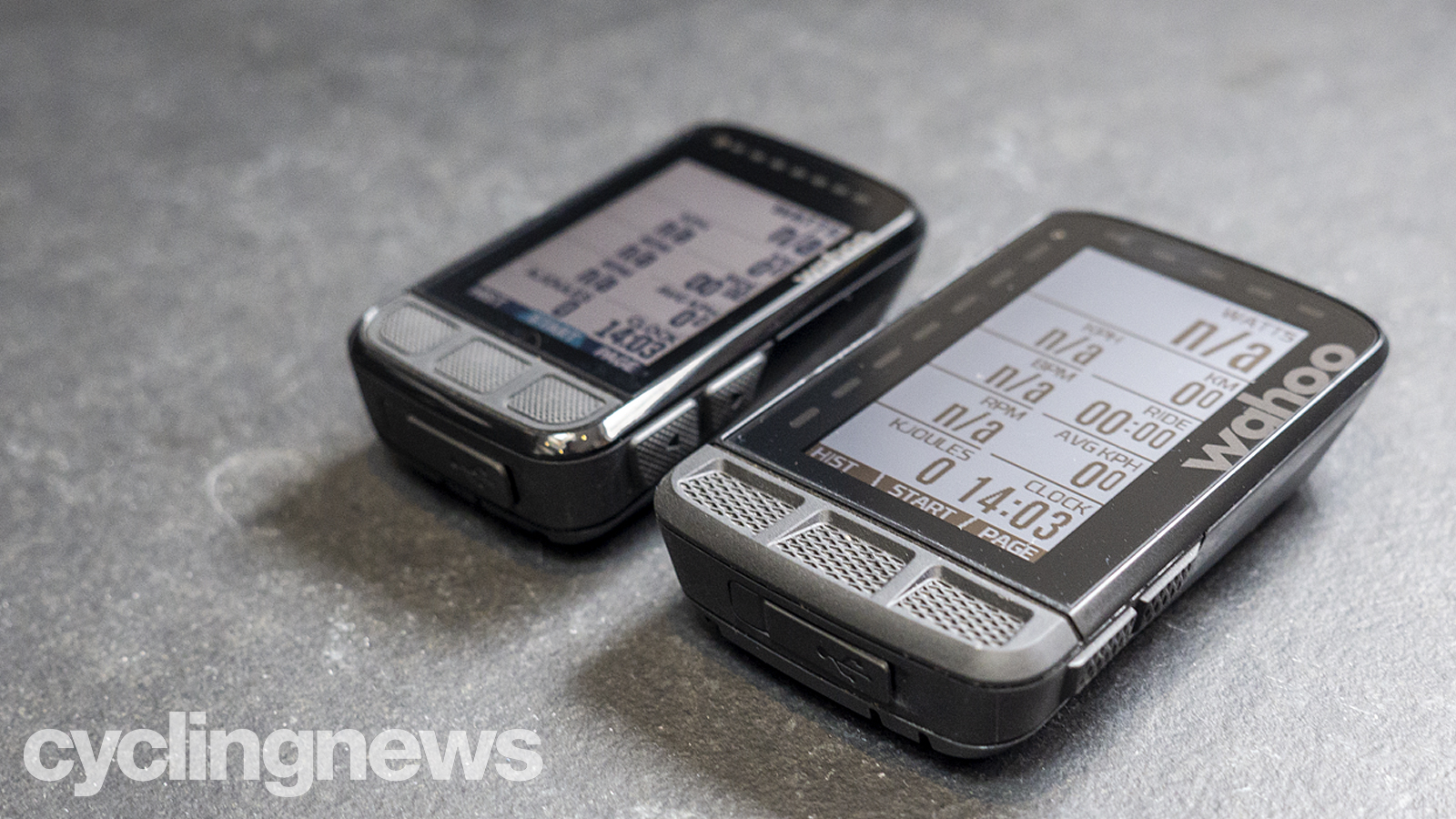
The three front-facing buttons are convex, and all buttons are now slightly easier to press than before, and there's a nice tactile feel to the side buttons. This is noticeable when riding with summer gloves, but as the weather has turned and the gloves have thickened (for example, I'm wearing Castelli Perfetto Ros gloves and other similar pairs), the tactile click can no longer be felt.
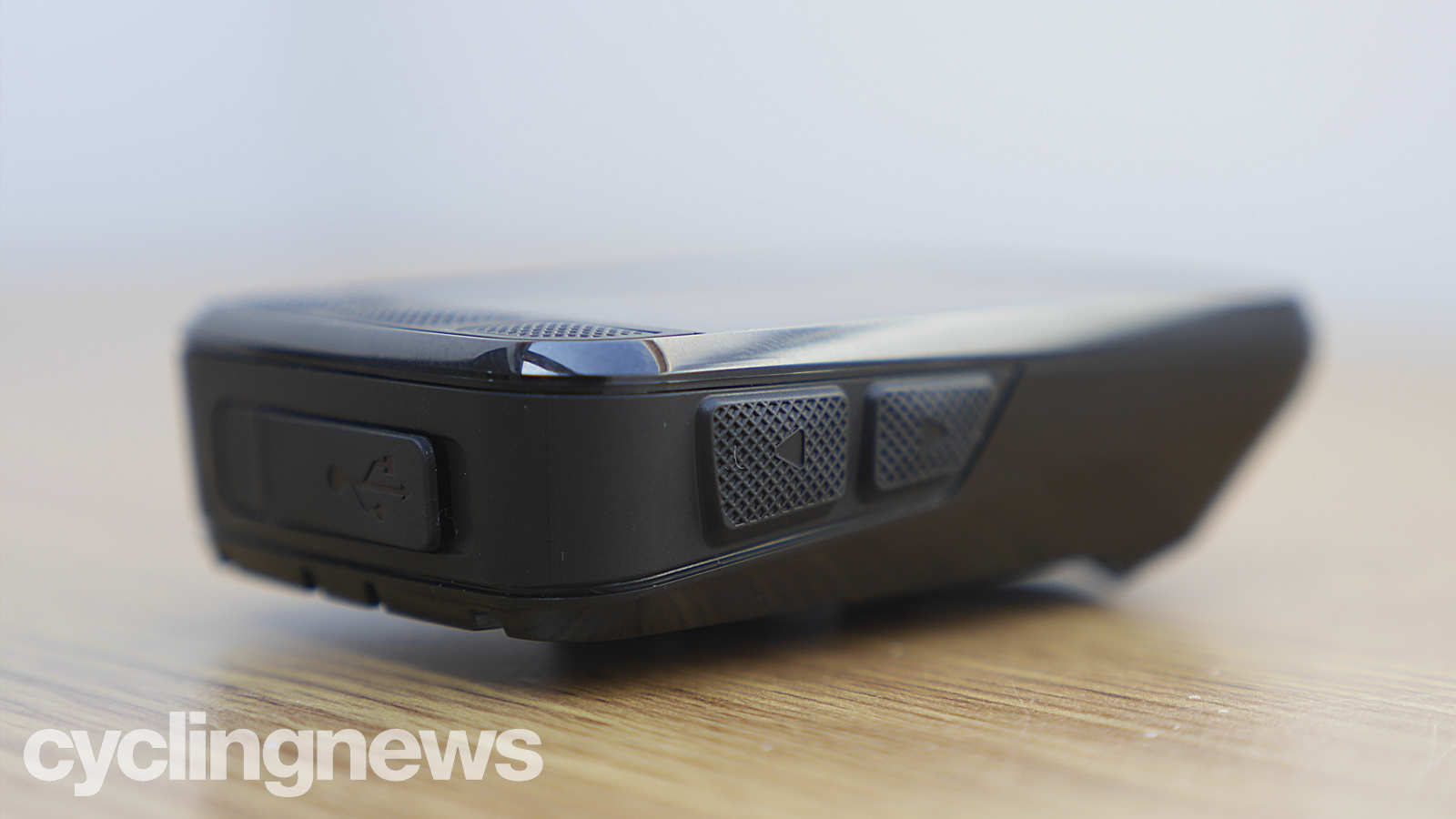
They are all rubberised and textured for grip, and while I expected the texture on the front-facing buttons to fill with dirt, they remain clean - although the recess between buttons and screen has been filled slightly.

The Elemnt Bolt is one of very few cycling computers to have made the switch to USB-C charging - the only other we've tested is the Hammerhead Karoo 2 - and with it, a switch to faster 5A charging.
Our experience with the Wahoo Elemnt Bolt
GPS performance
The main purpose of any GPS cycling computer is to track your GPS location to give you an accurate review of where you went and the speeds at which you travelled, so let's look at that first. I've used the Elemnt Bolt for nearly all of my outdoor rides since its launch, so I have randomly plucked out a selection of rides and zoomed in to see how the GPS line corresponds to the roads and trails on which I actually travelled.
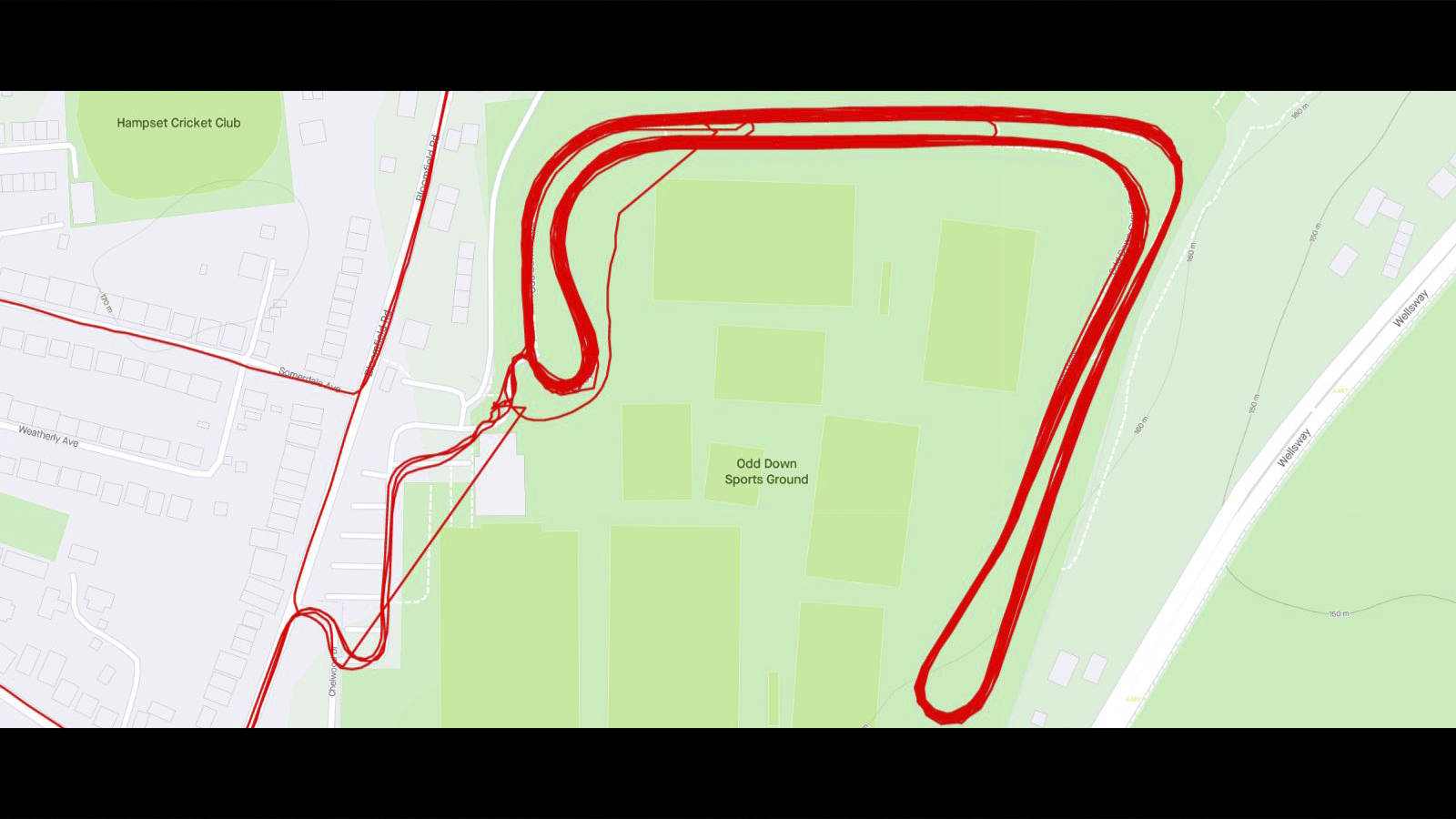
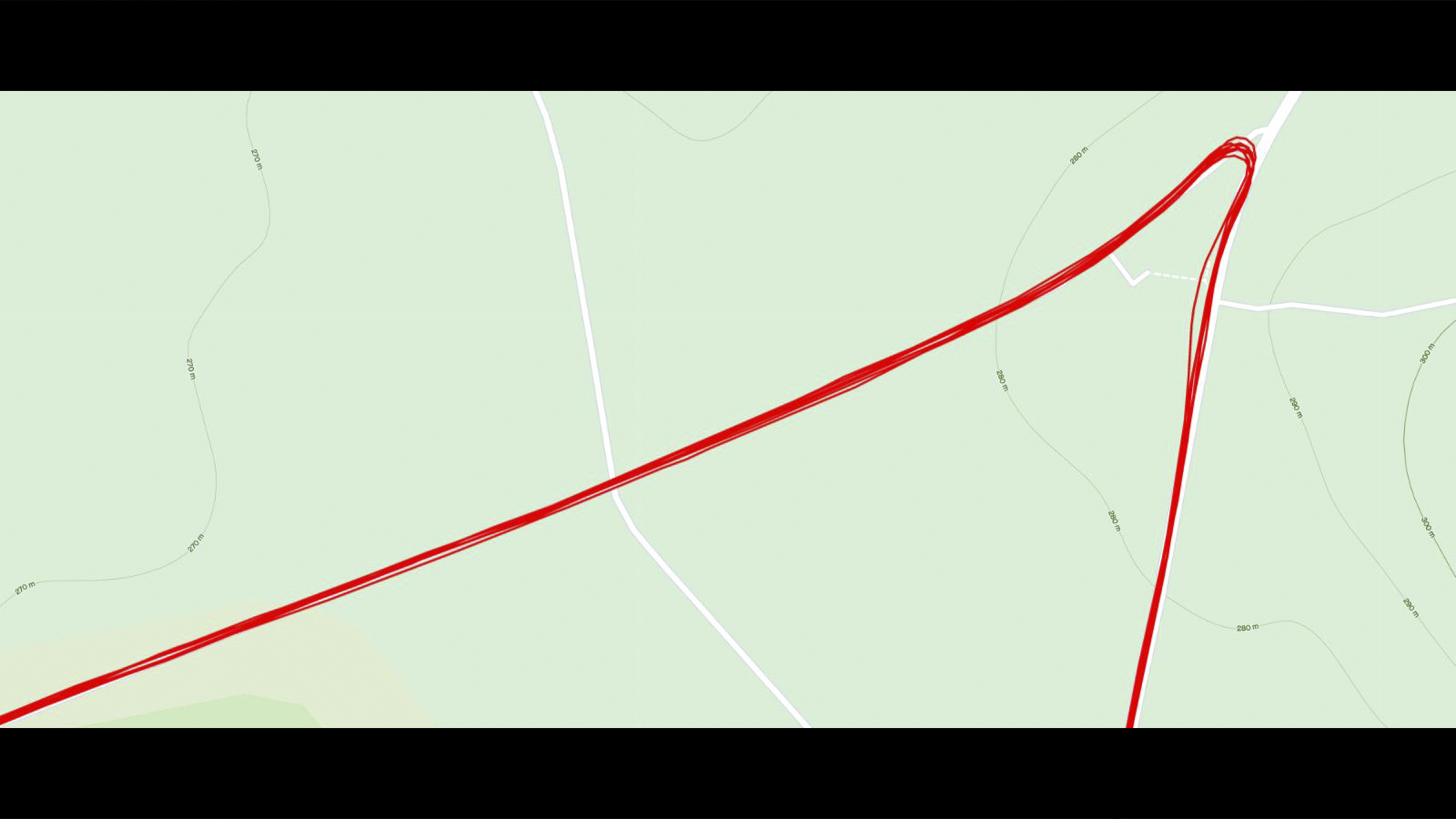
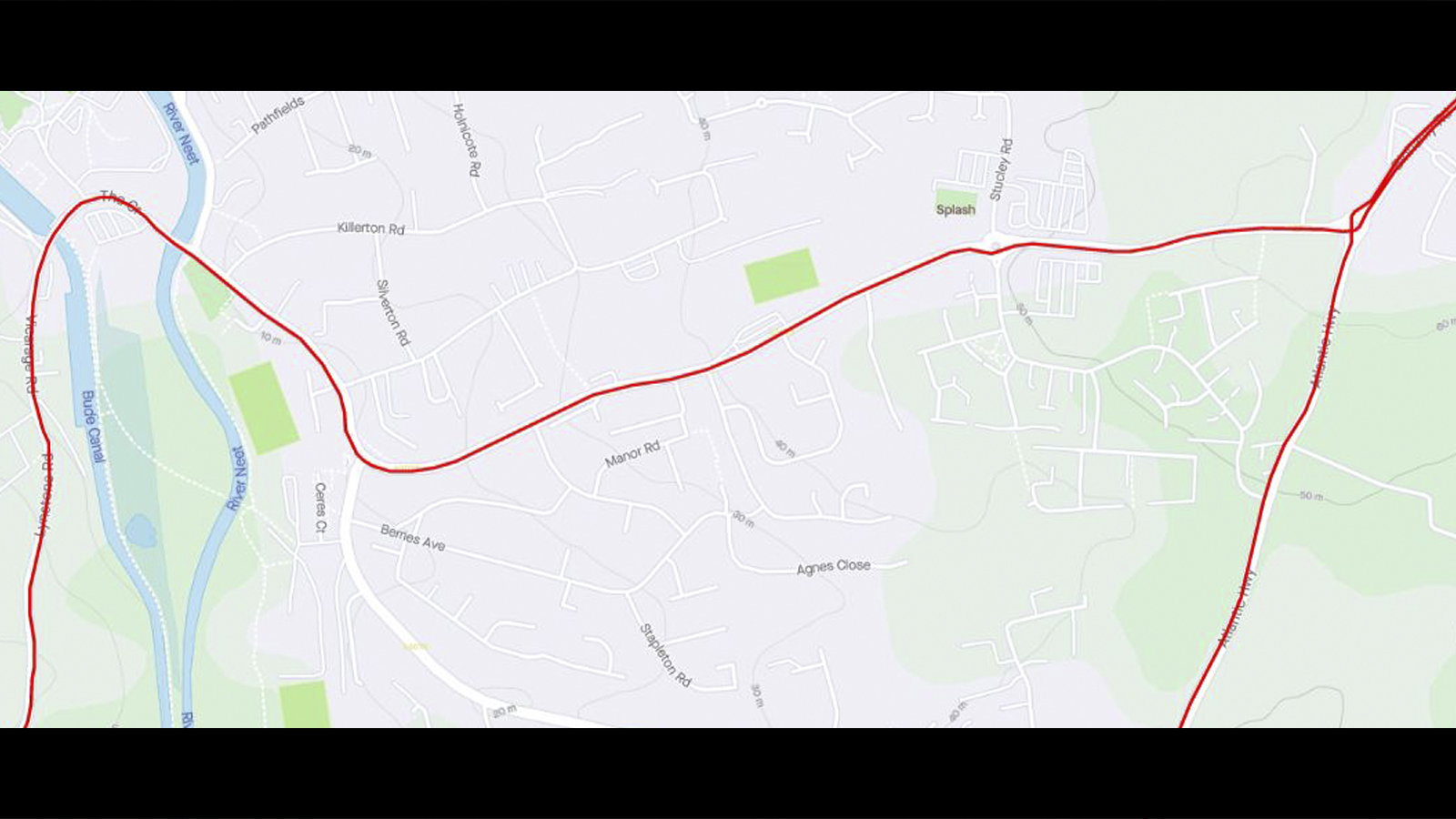
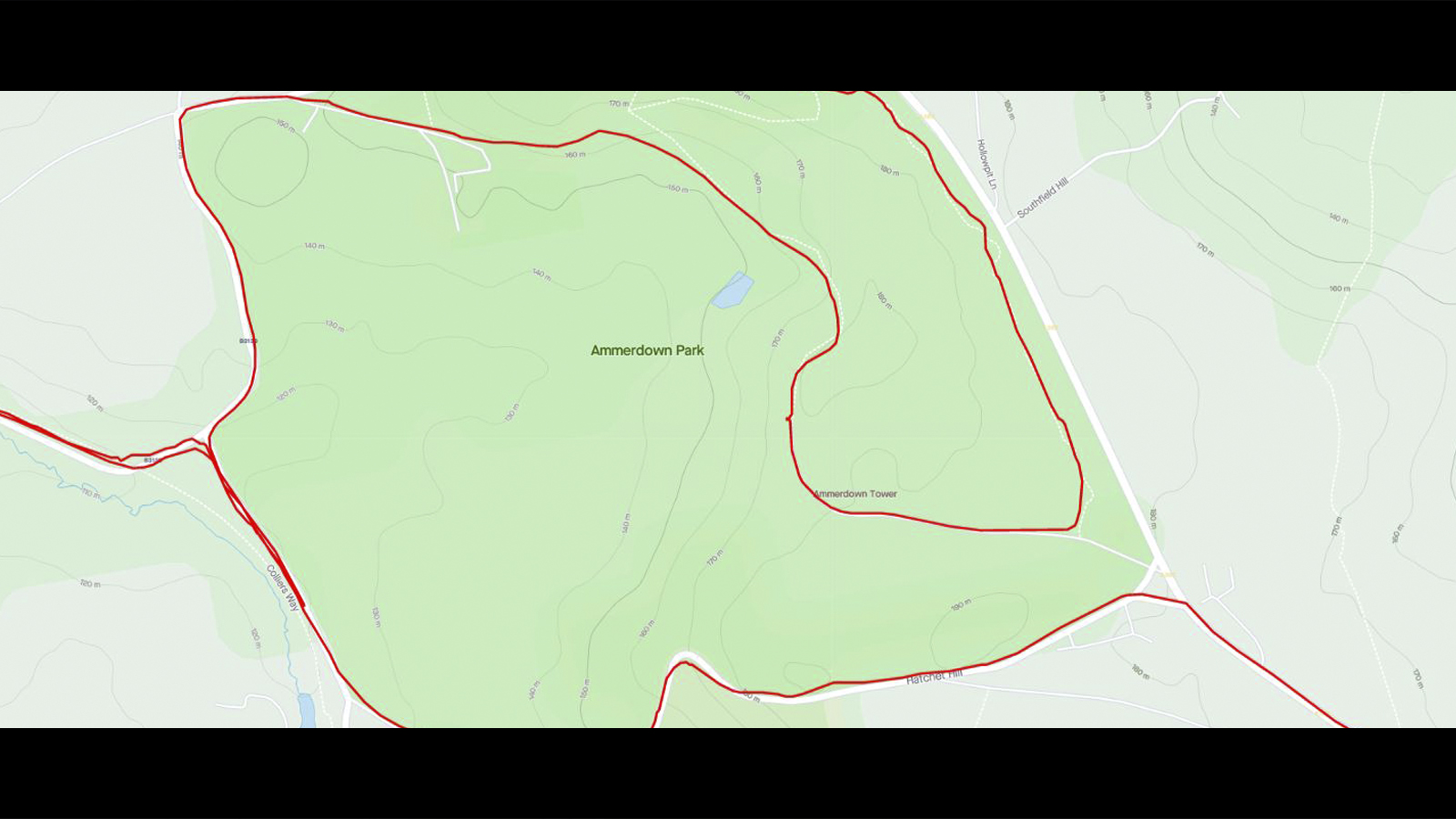
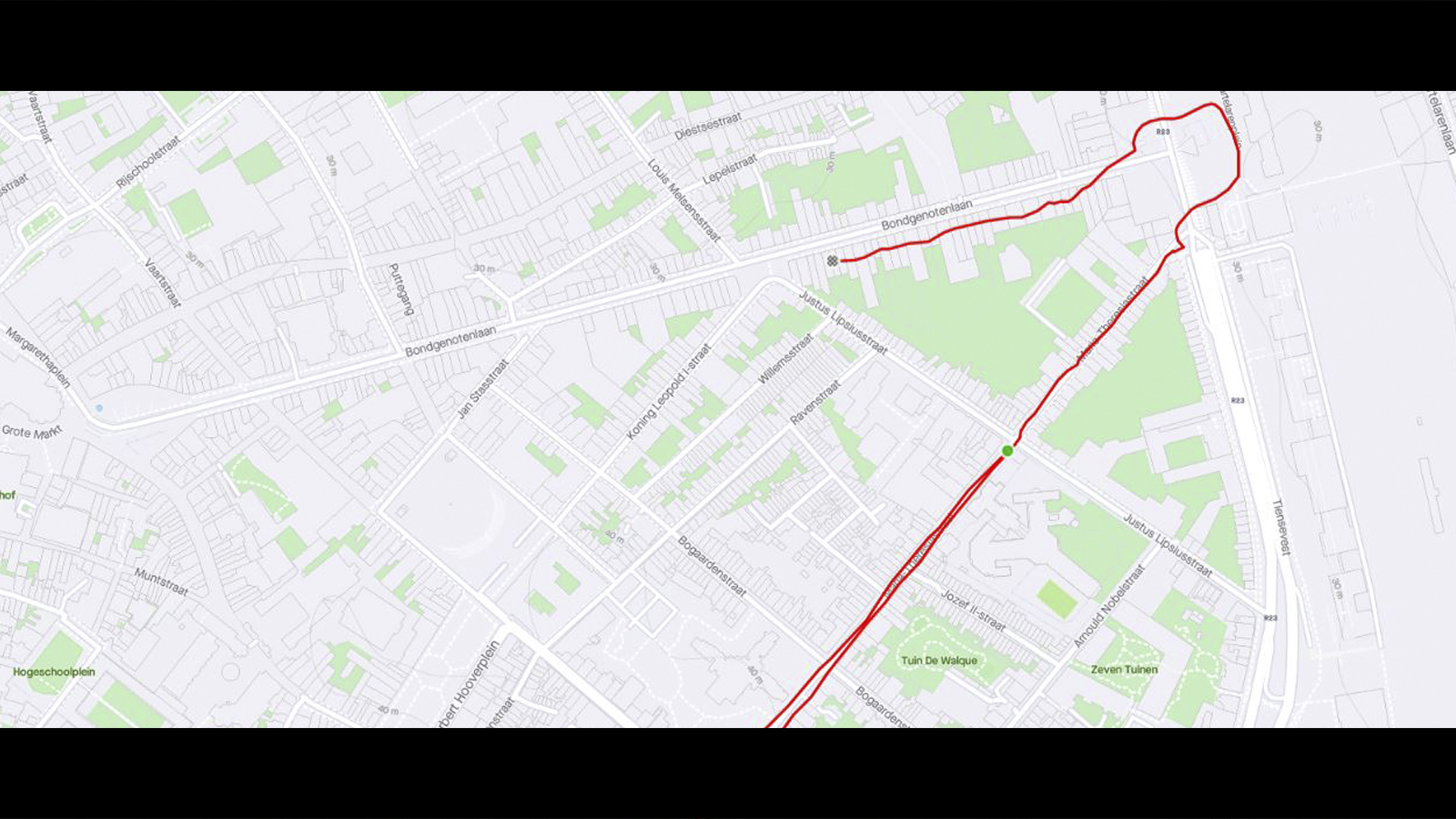
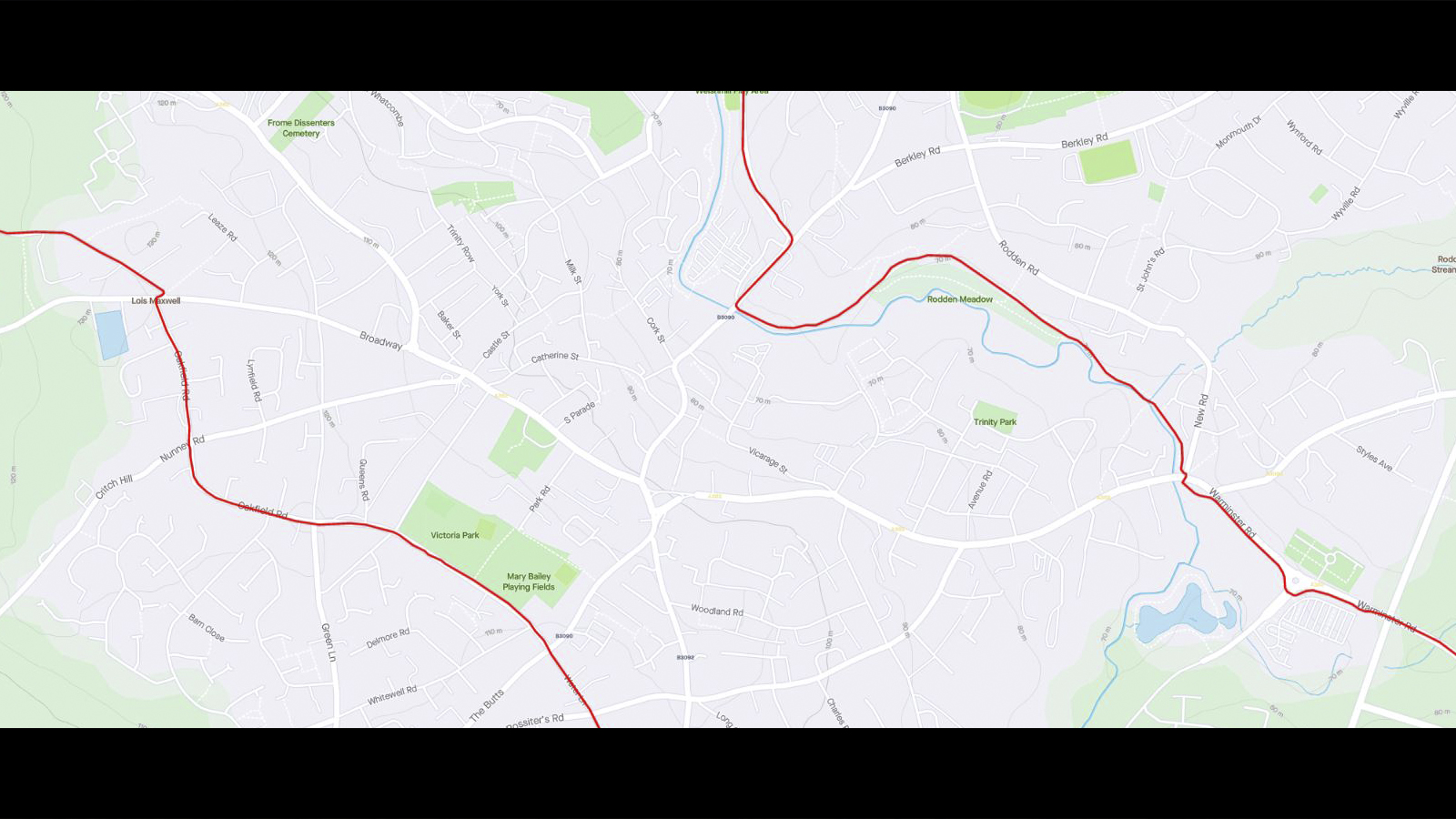
One trend I've noticed is that the accuracy of the GPS has degraded over the months that I've been using the Elemnt Bolt. Earlier rides would be perfectly aligned with roads consistently, while more recent GPS data tends to have a little more drift, although not on every single ride; some are still fine. This could be pure coincidence based on the rides I've randomly picked, or weather conditions as summer has turned to autumn, and I've never had it so bad that it fails to recognise a Strava segment, but if the GPS is to be believed, I've trespassed in quite a few gardens and somehow ridden through buildings.
Functions
The Wahoo Elemnt Bolt is an embarrassment of riches when it comes to what it can do and the data it can display. Of course, it has its core feature set like the ability to track your location and calculate basic ride metrics such as speed and distance, but it goes way beyond basic in terms of what it can display. In fact, the list is so extensive that I lost count whilst trying. There are 20 categories' worth of data, including the usual power, speed, distance and time, more advanced metrics such as muscle oxygen, and extras for e-bike data, tyre pressure, gear selection, the weather and more. Each of which offers up displays for super-granular metrics. The Power category, for example, offers 90 different metrics such as average, maximum, balance, power to weight, power vs target, normalised power, pedal smoothness, torque, time in zones and much much more.
Of course, to take advantage of many of those, you'll need external sensors to actually measure the data - you obviously can't get power data without one of the best power meters - but if you're a data-driven athlete, you can be sure that whatever metric you wish to track, Wahoo will likely support it. The caveat here is that, at the time of writing at least, Garmin devices can display data from blood glucose monitor, Supersapiens, but Wahoo cannot.
You can pair sensors in one of two ways: either directly on the Bolt device or via the companion app, however neither give you the option to add a sensor manually via its ANT+ ID.
The Elemnt Bolt also supports on-device navigation (which I'll explain in more detail a little further below), as well as Strava live segments, the ability to pull in routes, segments and workouts from various third-party apps, and upload rides to Strava, TrainingPeaks and Today's Plan.

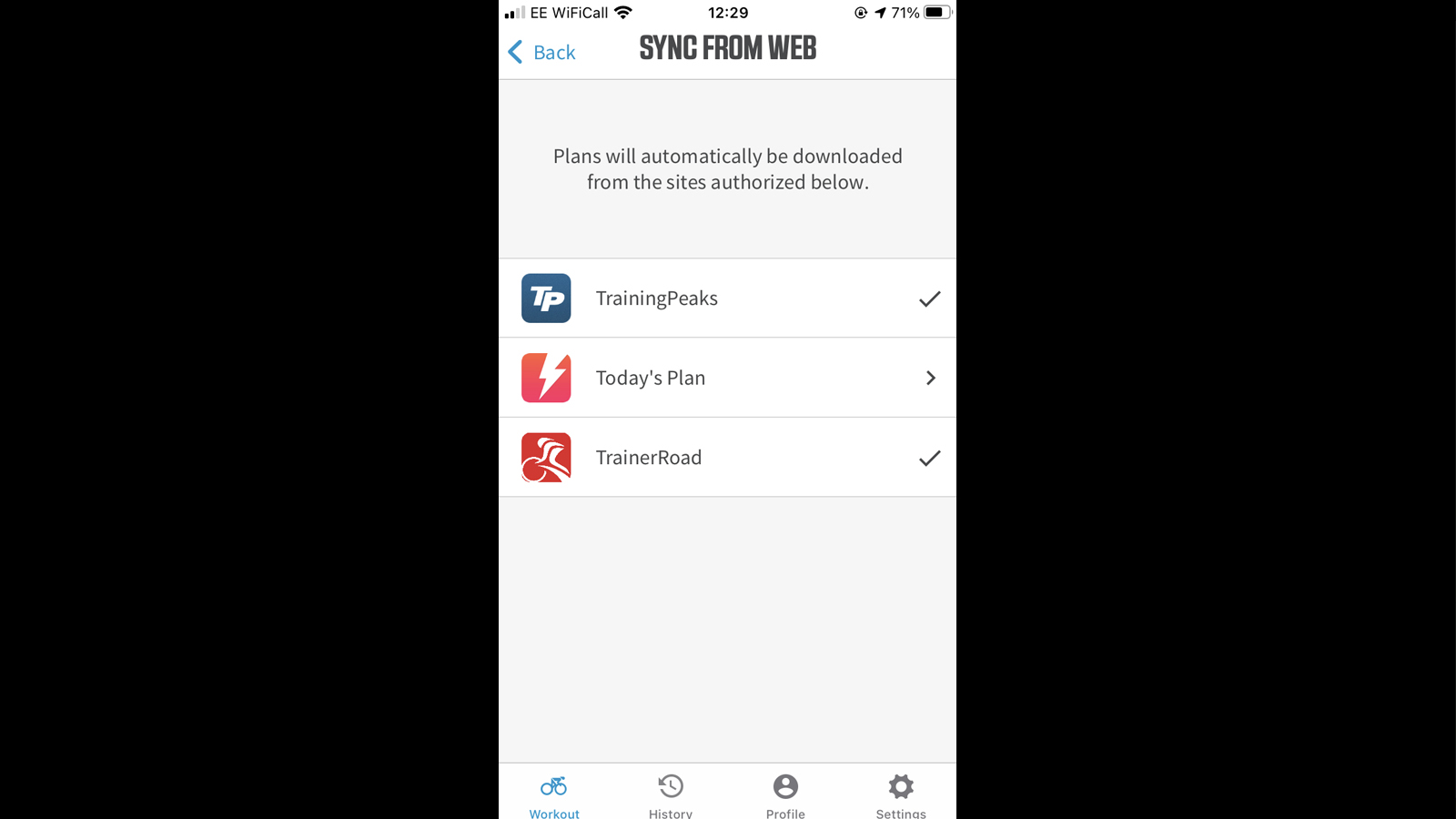
App
Where the Elemnt Bolt excels - and by association, the Roam does too - is with the accompanying Elemnt companion app. It's here where the Elemnt is connected to the various third-party apps to upload rides and download workouts or routes. It also pushes notifications from your phone to your device, and allows you to share your live location with your loved ones.
The app houses a lot of the tasks that aren't directly tied with the ride experience, such as the ability to change the data displayed on each page and adjust your training zones, so that the device itself can save processing power and battery life for the important things.
Display
The 2.2-inch (55.9mm) display gets a resolution of 240 x 320px, which is nearly exactly the same number of pixels as Garmin's Edge 530 & 830 computers at 246 x 322px. Garmin can boast a greater total number of pixels, but of course, Garmin's screen is also larger at 2.6 inches, so the overall clarity is actually greater with Wahoo.
For the most part, the Elemnt Bolt uses colour sparingly to add value and enrich the experience for the user. In one example, your power or heart rate is displayed as a number as usual, but on a colourised background that denotes which zone you're in. This adds a second dimension to the data that's on display and removes the memorisation that was previously necessary.
As already stated, the map is where the colour adds the most value, and in combination with the more detailed base map, there is a superb amount of clarity on where you are and what's nearby, be that bike paths, rivers or roads.
The display is fixed in layout, but via the companion app it can be vastly customised in terms of what data is displayed. You can add as many pages as you like, with up to nine metrics displayed on each, and when the page is set up, you can then 'zoom' in and out, which drops the lower metrics off the bottom whilst enlarging those at the top. Strava Live Segments, mapping, elevation and workouts get their own pages, and whilst performing a workout, you can also zoom into the graph to see a more granular view of the interval you're doing, or zoom out to see what else the workout has in store later.
Maps and routing
Despite the clarity of the display and the improved basemap clarity, without a route plotted, the Elemnt Bolt is still difficult to use to get yourself from point A to B, especially if you're trying to pick your route whilst moving, as the screen is so small.
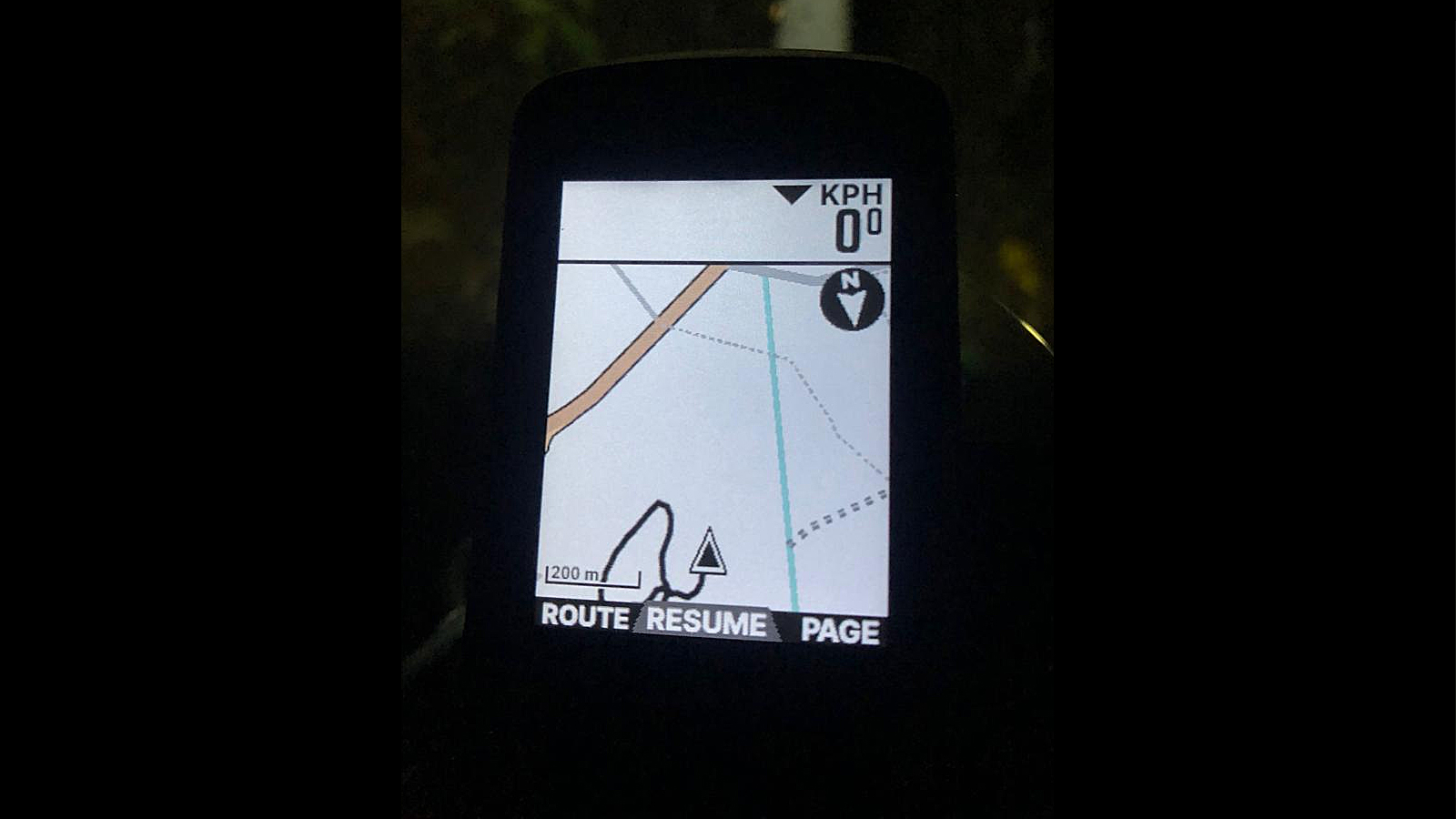
In terms of the quality of the map, on the road, I've not come across a single inaccuracy or missing road. Off-road, things get a little trickier for base map creators and I've stumbled across quite a few trails that the map claims don't exist, but in fairness to Wahoo, no other device I've used knows about them either.
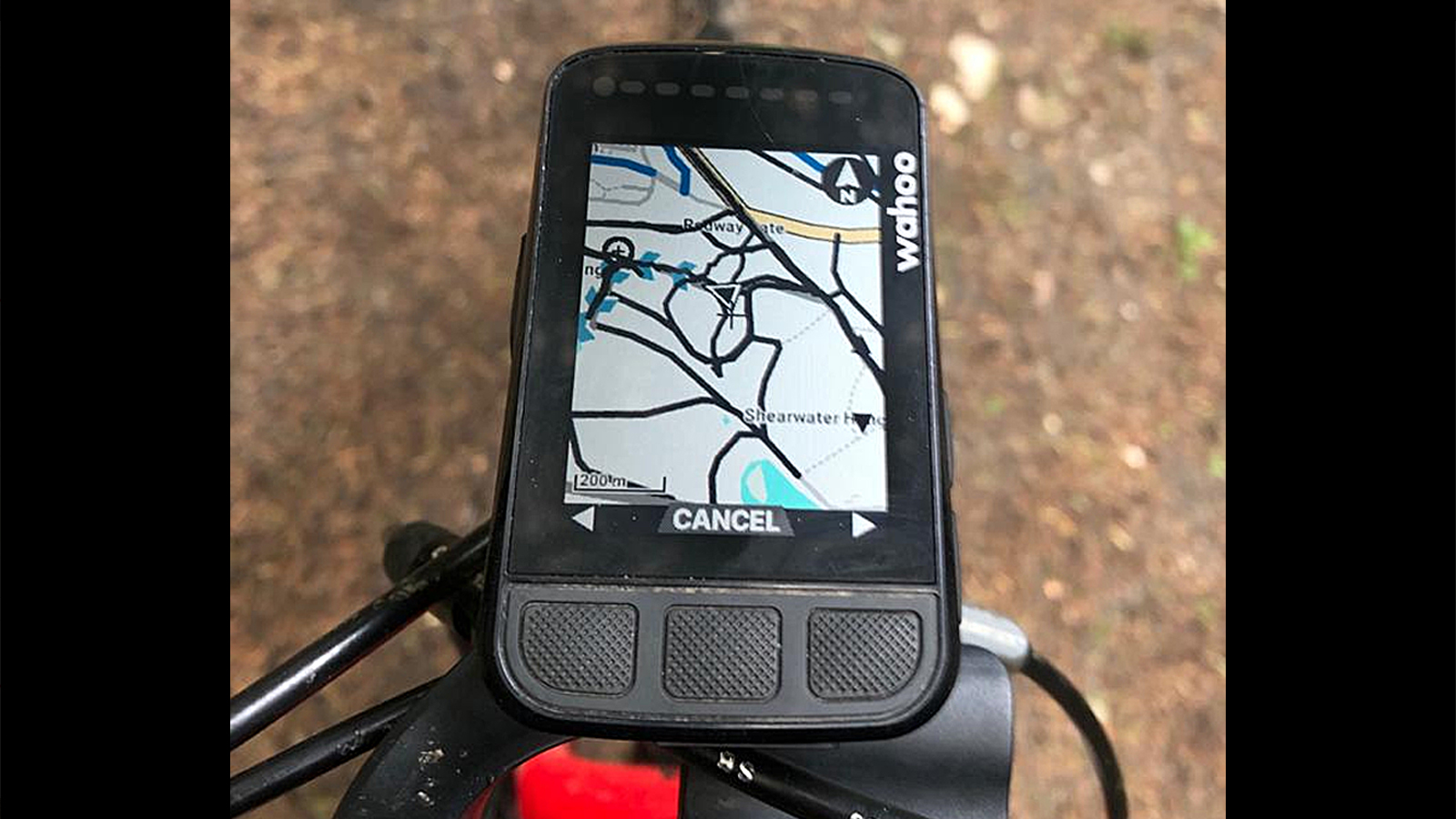
In addition, despite the abundance of colours available, some bike paths are denoted in black, the same colour used for the 'where-you've-been' line, which adds confusion when you're using the Bolt for exploring an area of compact roads or trails, as I regularly do whilst riding the gravel bike in the local forests.
With that, if you find yourself hoping to get from A to B, the better way to get there is to stop first and use the Elemnt Bolt's 'Take Me To...' on-device navigation function. A problem arises here if you don't know the geographical location of your destination on the map and don't have the location saved already, because there's no search function or on-device points of interest to go by. You'll need to pan around the map to find your destination and effectively drop a pin where you want to be taken.
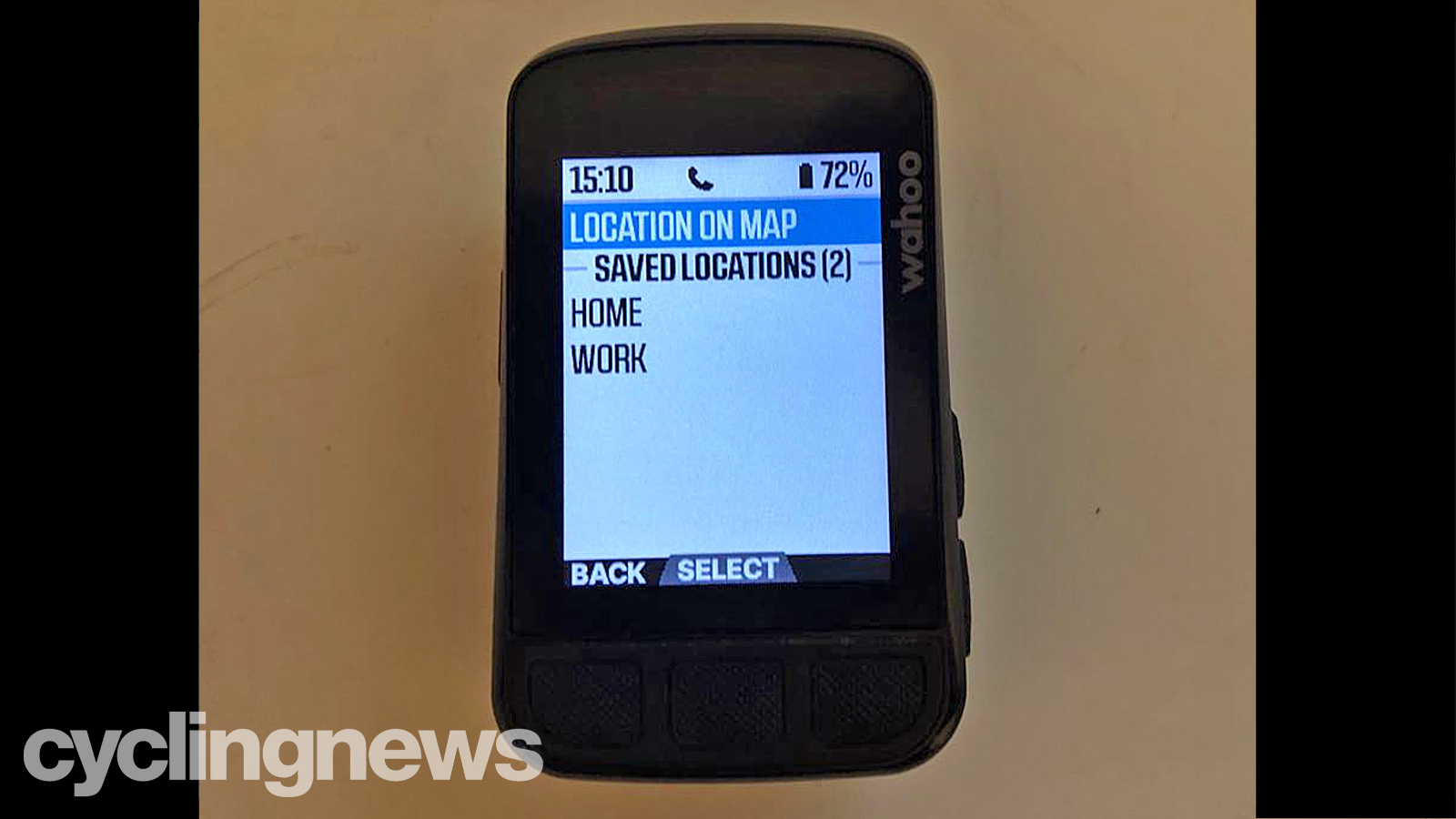
At this point, you'll have probably got your phone out anyway because the Wahoo Elemnt companion app offers a much better routing function, including a very comprehensive search function that includes businesses, points of interest, public toilets, towns and more. This is tied to the device in real-time, meaning as soon as you plot your route, it's automatically displayed on the head unit - you don't need to then sync and load it up.
If you do choose to use the 'Take Me To…' feature and drop the pin at your chosen location, then you get a choice of four routing types: Road, Cross, MTB or Hybrid, and all the routes it has served up for me so far have been accurate and direct.
Charge time & battery life
In testing, a full charge took 1h 44m and 17s (don't worry, I didn't sit and watch it the whole time), which then results in 15 hours of run time. Notably, the Elemnt Roam charged fully in a similar amount of time (1h 47m 08s) and offers 17 hours of life, so if you're after big battery benefits, then the Bolt is beaten. However, a caveat to that test is that the Bolt's time from zero to 50 per cent was performed more than twice as fast as the Roam, so if you're the type who regularly forgets to charge, then a quick last-minute blast of juice to the Bolt will provide more ride time.
Verdict
The Wahoo Elemnt Bolt isn't without its quirks; the minor GPS drift (if not coincidental) and the clunky on-device routing are both things that will fade into a non-issue during ordinary use, and the main uses for the device are so fantastically seamless.
Sure, much of what the Bolt can do is replicated by the competition, but it does so in a compact, lightweight modern package, with a simple user interface and a headache-free connection to third parties.
For example, the ability to automatically upload your ride to Strava, download routes from Komoot, or pull in workouts from your TrainerRoad account is nothing new, but it's so impressively handled by Wahoo that it rarely requires a thought, and that is just one of the things that makes owning the Elemnt Bolt a genuine pleasure.
The only thing standing against it is the small screen size, but that's a decision that will ultimately depend on the type of riding you do. If you're exploring and often using the map to navigate, then you might become frustrated, but if you're following preset routes or sticking to the roads you already know, then the Bolt is definitely worthy of consideration.
Should I buy the Wahoo Elemnt Bolt?
Buy it if:
- You want a modern, aerodynamic cycling computer with all the latest features, frequent updates and solid customer support
- You value weight and size over screen size and battery life
- You value simplicity and user friendliness
Don't buy it if:
- You want a large screen for on-the-go map browsing
- You want open-source app integrations such as Garmin IQ
- You only need the basic metrics such as speed, distance and time - the best budget cycling computers cost much less and will do the same thing well
- You want the biggest battery life money can buy
Wahoo Elemnt Bolt price & availability
The Wahoo Elemnt Bolt retails for £249.99 / $279.99 / €279,99 / AU$429.95. Being a Wahoo product, it's unlikely you'll find it with a discount, unless as part of a bundle deal with other Wahoo products.
As for availability, Wahoo did suffer at the hands of the pandemic early on, but it seems to be back up and running and availability seems generally very good.
Also consider
- Wahoo Elemnt Roam: Many of the same features and user-friendliness but in a larger package with bigger battery
- Garmin Edge 530: A similarly priced package from the competition
- Garmin Edge 830: Like the Edge 530 but with a touchscreen
- Hammerhead Karoo 2: Best-in-class touchscreen responsiveness
Tech Specs: Wahoo Elemnt Bolt
- Connectivity: ANT+, Bluetooth, WiFi
- Companion App: Yes
- Navigation: Open Street Maps
- Claimed battery life: 15 hours
- Weight: 69g (actual)
- Screen: 2.2in/56mm diagonal, full colour

Josh is Associate Editor of Cyclingnews – leading our content on the best bikes, kit and the latest breaking tech stories from the pro peloton. He has been with us since the summer of 2019 and throughout that time he's covered everything from buyer's guides and deals to the latest tech news and reviews.
On the bike, Josh has been riding and racing for over 15 years. He started out racing cross country in his teens back when 26-inch wheels and triple chainsets were still mainstream, but he found favour in road racing in his early 20s, racing at a local and national level for Somerset-based Team Tor 2000. These days he rides indoors for convenience and fitness, and outdoors for fun on road, gravel, 'cross and cross-country bikes, the latter usually with his two dogs in tow.
